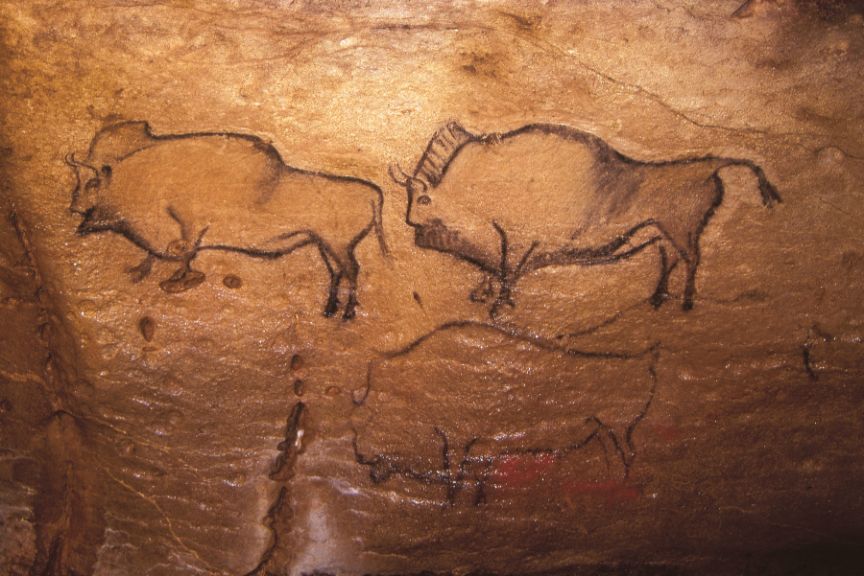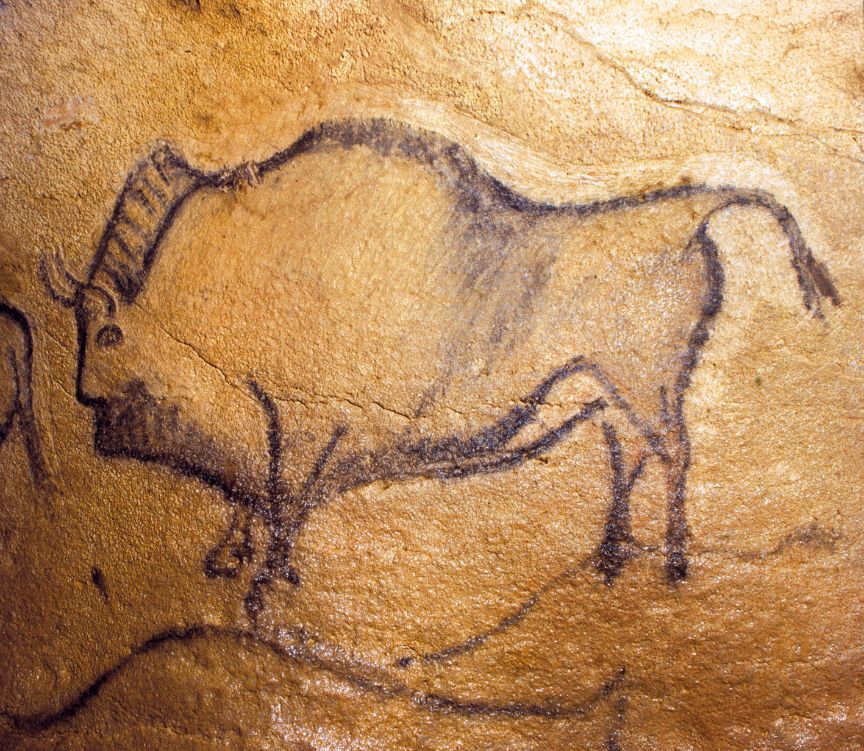La Covaciella Cave
Identification of the Property
SubirLas Estazadas, Cabrales, Principality of Asturias
Access
From Carreña take the AS-114 to Las Estazadas. The access to the cave is situated shortly after the road crosses over the Ricao or Golondrón stream.
Geographical coordinates
UTM 30T 348075E / 4798054N Z: 290
Description
SubirTopographic description
The cave is located in a narrow gorge, cut by a tributary to the River Cares on its left bank, within a rugged landscape forming part of the pre-littoral depression in eastern Asturias. The cave begins in a large chamber, divided into two parts by a large talus cone, and continues towards the west along a high level passage with a length of 40m. The original entrance was probably located at the end of the eastern chamber and became blocked by slope movements in prehistoric times.
Date of Discovery
In October 1994, an explosion set off in connection with the roadworks widening the AS-114 caused this new cave vault to break near the already-existing Covariellas Cave. On the 16th October, a group of villagers entered the cave and discovered the ensemble of cave art.
Archaeological Research
The study of the cave, carried out immediately after the discovery, was initially carried out by J. Fortea, who documented the parietal ensemble and dated it directly by radiocarbon determinations. Later, the cave was the subject of further studies in 2004 and 2014.Salto de línea
 Pulse para ampliar
Pulse para ampliar
Artistic contents: paintings and engravings
The cave art at La Covaciella consists of a small number of figures located on the southern wall of the passage. The depictions were produced with the techniques of engraving and painting, either separately or in combination. From east to west, three different areas can be distinguished.
The main panel is organised around a large vertical fissure, which articulates the area and conditions the distribution of the figures, so that those on the left face towards the west and those located on the right (except one) are oriented towards the east. This results in a form of symmetry by confrontation. In this area, figures of stag, horse, ibex and bison are represented, with three outstanding complete figures of bison, which appear to represent a courtship scene. In addition, red signs take the form of meandriform lines, dots and vertical bars.
The so-called Sign Panel consists of a faded red stain, probably the remains of a complex sign. Finally, the Bison Panel includes the figure of a bison facing west, similar to those on the main panel. A single red line has been identified on the opposite wall.
The assemblage appears to be homogeneous in general, and its style can be attributed to the classic Magdalenian, with parallels in other caves in North Spain and the Pyrenees (Altamira, Santimamiñe, Niaux, Trois Frères). The mean of the direct dates obtained by radiocarbon analysis for two of the figures is 14,100 ± 130 BP, which is coherent with the proposed cultural assignation.
 Pulse para ampliar
Pulse para ampliar
Bibliography
SubirFORTEA PÉREZ, F. J., RASILLA VIVES, M. DE LA, RODRÍGUEZ OTERO, V., HOYOS GÓMEZ, M., F.A.S.E., VALLADAS, H., TORRES, T. 1995. Covaciella. Excavaciones Arqueológicas en Asturias 1999-2002. 221-226. Oviedo.
FORTEA PÉREZ, F. J., 2007. Cuevas de Covaciella y El Bosque (Cabrales). Campaña de 2000. Excavaciones Arqueológicas en Asturias 1991-1994. 258-270. Oviedo.
GARCÍA-DÍEZ, M., OCHOA, B., RODRIGUEZ ASENSIO, J. A. (eds.). 2015. Arte rupestre paleolítico en la cueva de LaCovaciella (Inguanzo, Asturias). Oviedo.



